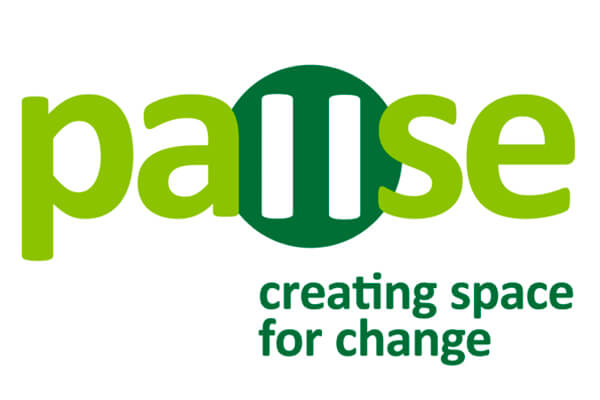Energy, Utilities & Household Bills: How Smart Use of Voucher Codes Can Cut Real-World Costs
UK households are still contending with stubbornly high living costs, and utility bills remain a major pressure point. Ofgem’s latest quarterly adjustment sets the October–December 2025 energy price cap for a typical dual-fuel, direct-debit household at £1,755—a 2% rise on the summer level—so complacency is expensive. See Ofgem’s official explanation of the cap and timeframe for the current figures and mechanics. Source: Ofgem

Context matters. The poorest fifth of households now devote the largest share of their budgets to housing, fuel and power, underscoring why incremental savings on energy, broadband and household essentials meaningfully improve financial resilience. The latest Office for National Statistics release details how these categories weigh on budgets and how the burden differs across income bands. Source: ONS
Against this backdrop, voucher codes are often pigeonholed as “retail only”. That’s a mistake. Used strategically, they reduce costs across multiple bill lines: broadband and mobile plans, energy-saving devices and appliances, and everyday household consumables. Even small percentage reductions, when applied consistently, compound over a year—especially for households with typical consumption around 2,700 kWh of electricity and 11,500 kWh of gas. Those Typical Domestic Consumption Values help you benchmark what “average” looks like and where efficiency buys the most impact. Source: Ofgem
This guide takes a practical, expert view: where voucher codes genuinely shave money off household bills, how to stack them with cashback and loyalty schemes without breaching terms, and how to avoid the traps—fake codes, inflated “was” prices, or incompatible offers. The aim is straightforward: give you a reliable playbook to lower recurring costs while staying within the rules and using trusted sources.
Understanding the Real Cost of Household Bills in the UK
Any conversation about saving on utilities and household essentials must begin with a clear-eyed view of the numbers. According to the Office for National Statistics, UK households spent an average of £623.30 per week across all goods and services in the 2023–24 financial year, with 19% of this dedicated to housing, fuel and power—the single largest spending category. Transport followed at 14%, highlighting how energy and related utilities dominate budgets. Source: ONS
Energy bills within this expenditure remain volatile. For a medium household with typical usage—around 2,700 kWh electricity and 11,500 kWh gas—Confused.com estimates an average monthly electricity bill of £73.41 and an average monthly gas bill of £91.04. That translates to more than £1,975 a year for energy alone. Source: Confused.com
When broadband, water rates, mobile contracts, and day-to-day household consumables are added, the scale of annual fixed outgoings becomes stark. Broadband alone averages about £26 per month in 2025, or just over £300 a year before factoring in mobile phone contracts, streaming services, or television licences. Each of these items is often treated as a non-negotiable bill, yet all are categories where voucher codes and structured discounting can trim costs without reducing quality of life.
Understanding these baselines is critical. They form the yardstick by which any saving—be it a £5 monthly broadband discount, 10% off a major appliance, or 15% cashback on essentials—should be measured. When applied consistently, savings of this magnitude can reduce total household expenditure by several hundred pounds annually, turning abstract percentages into tangible relief for households under pressure.
How Voucher Codes Can Be Applied to Everyday Bills
Voucher codes are no longer confined to fashion or lifestyle purchases. They are increasingly relevant in areas traditionally seen as fixed household costs. For example, broadband contracts often run with promotional offers, and codes can unlock discounts on setup fees, monthly charges or bundled services. Uswitch reports that the average UK household broadband cost sits at £26 per month, leaving ample room for codes to make measurable differences. Source: Uswitch
Mobile plans are another category where voucher codes deliver. Network providers regularly run referral or switcher incentives, and applying the right code can reduce monthly bills, add free data or secure cashback on new devices. For households with multiple mobile users, these savings quickly add up.
Energy use itself is less flexible, but there is scope for indirect savings. Voucher codes frequently apply to energy-efficient products such as LED lighting, smart thermostats and appliances rated A or higher. These purchases not only cost less upfront when codes are applied but also reduce consumption, which compounds into lower bills year on year.
Beyond utilities, everyday living essentials present overlooked opportunities. Cleaning products, DIY tools and homeware are often available at supermarkets and retailers that accept codes. Even small weekly reductions have cumulative impact when set against an annual household goods bill.
The key is recognising that voucher codes are not only about discretionary spending. Applied strategically to recurring categories such as broadband, mobile contracts, appliances and weekly essentials, they become part of a long-term household cost management plan rather than a one-off saving tactic.

Broadband and Mobile Savings with Voucher Codes
Connectivity is no longer a luxury; it is a core utility. The average broadband bill in the UK is currently around £26 per month, according to Uswitch, which equates to over £300 annually. Source: Uswitch Voucher codes can reduce this baseline in several ways. Common offers include waived installation fees, discounted monthly rates for the first 12 months, or extras such as free upgrades to faster speeds. Even a modest £3 monthly discount saves £36 per year on broadband alone. Checkout our Broadband Genie voucher codes to see how much you can save?
Mobile plans are similarly open to code-driven savings. Networks like Vodafone, O2, and EE frequently promote referral codes that provide money off both the referrer and new customer bills. Student voucher schemes add further reductions, often cutting 10 to 20 percent from contract prices. For households managing two or more contracts, this translates to meaningful reductions in recurring outgoings. Our Affordable Mobiles voucher codes can save you money on your tariff and handsets as well!
Another effective tactic is to use codes during switching. Broadband and mobile providers compete aggressively for customers, and codes attached to new customer offers can unlock cashback or gift card rewards worth £50 or more. This incentive, combined with a cheaper tariff, compounds savings.
Voucher codes also apply to device purchases. Handsets, routers, and accessories can all be bought with discount codes that reduce the initial outlay, which helps spread costs more effectively. For consumers trying to balance technology needs with tight budgets, these small wins add up across the year.
Energy-Saving Products and Appliances
One of the most effective ways to cut bills is to reduce energy consumption itself. Ofgem sets typical domestic consumption values at 2,700 kWh of electricity and 11,500 kWh of gas per year for a medium household. Source: Ofgem These figures provide a clear baseline for calculating how much difference an efficient appliance can make. A switch to an A-rated washing machine, for example, can cut electricity use by up to 30 percent compared with older models.
Voucher codes reduce the upfront cost of purchasing these products. Retailers such as Currys, Argos and Amazon regularly offer codes that shave 10 to 20 percent off large appliances and small energy-saving devices. This makes upgrades like smart thermostats, LED lighting and energy monitors more accessible. A £50 discount on a smart thermostat through a code not only reduces the initial outlay but helps deliver ongoing gas savings by optimising heating schedules.
Smaller household devices also add up. Voucher codes applied to multi-packs of LED bulbs or smart plugs can trim purchase costs while reducing energy usage daily. These items often deliver payback within a year thanks to lower electricity bills, meaning the combined effect of upfront discount and long-term savings compounds quickly.
It is important to note that retailers are keen to push efficient products, which means voucher codes in this category are both frequent and generous. For consumers, this creates an opportunity to invest in technology that pays dividends well beyond the checkout.
Household Essentials and Everyday Living
Household budgets extend well beyond utilities. Cleaning products, toiletries, laundry detergents, homeware and DIY items account for a significant proportion of weekly expenditure. According to the Office for National Statistics, average household spending across all categories reached £623.30 per week in 2023–24, highlighting the scale of outgoings where savings can be applied. Source: ONS
Voucher codes reduce costs in this category in several ways. Supermarkets and major retailers frequently release codes for money off large baskets, such as £10 off £60 spends or 15 percent off household essentials. When applied to repeat weekly or monthly shops, these codes create consistent savings. A family saving £5 per week through codes equates to £260 annually without altering consumption patterns. Checkout our Morrisons voucher codes and get up to £25 off your weekly shop.
Home improvement and furniture are another overlooked area. DIY stores, garden centres and online furniture retailers often run voucher code campaigns that reduce upfront project costs. Whether redecorating a living room or buying essentials like bedding, applying a B&Q discount code can ease the financial burden of maintaining and improving a home.
These smaller but regular discounts build momentum. While consumers may underestimate the value of saving a few pounds on everyday goods, the cumulative effect over a year is significant. Voucher codes turn ordinary purchases into opportunities to reclaim part of the household budget that would otherwise be lost to rising prices.
Combining Voucher Codes with Other Savings Schemes
The strongest savings come not from using a single tactic in isolation but from stacking strategies effectively. Voucher codes are the first layer, but when combined with cashback platforms and loyalty schemes, the result is amplified. For example, applying a 10 percent voucher code on a £100 purchase reduces the price to £90. If the same transaction is routed through a cashback site such as Quidco or TopCashback offering 5 percent back, the net cost falls to £85.50. Add loyalty points from a supermarket card, and the effective saving deepens further.
This approach matters when set against the scale of household outgoings. The ONS confirms that average weekly household expenditure is now more than £623, which means even small percentage savings compound into meaningful amounts. A 5 percent reduction across this weekly spend would equate to over £1,600 in annual savings. Source: ONS
Voucher codes also complement government or council support schemes. For example, where grants or discounts are applied to energy bills or home efficiency measures, codes can be used on top to reduce the cost of complementary items like energy-efficient appliances or smart controls. This dual approach ensures consumers maximise both public support and market-driven discounts.
The principle is clear: savings tools rarely operate in isolation. The households that achieve the most consistent reductions are those that layer voucher codes with cashback, loyalty schemes and official grants, ensuring no available benefit is left untapped.
Consumer Protection and Safety
The growth of online voucher codes has brought with it a parallel rise in imitation and scam sites. For households already under financial strain, the risk of being misled into overpaying or exposing personal details is a serious concern. The Guardian recently reported that millions of UK households risk overpaying their energy bills if they fail to submit accurate meter readings before the new price cap period begins, illustrating how misinformation and oversight can translate directly into unnecessary costs. Source: The Guardian
Voucher code scams often take the form of websites offering deals that appear too good to be true. Warning signs include codes that promise unrealistic discounts, websites with no clear contact details, or requests for sensitive financial information in exchange for access. Legitimate voucher platforms never require card details to reveal a code, and consumers should treat any such request as a red flag.
Consumers can protect themselves by following a few clear rules. First, only use voucher codes from established providers with a track record of working with recognised retailers. Second, look for transparency in how codes are sourced and updated. Third, test codes in a secure checkout environment before committing to a purchase, ensuring discounts are applied correctly before payment. Finally, be cautious of browser extensions or unsolicited emails claiming to offer exclusive codes.
With household budgets so heavily impacted by utilities and everyday essentials, protecting against fraud is as important as finding savings. Relying on trusted sources and verifying codes before use ensures that consumers keep control of their finances rather than losing money to bad actors.

Charity Impact Through Everyday Savings
Voucher codes do more than relieve pressure on household budgets. When linked to an ethical business model, they can also create tangible benefits for wider society. In this case, every voucher code redeemed supports a framework where 20 percent of profits are donated to charity each month. This approach transforms individual acts of saving into collective contributions to good causes.
The donation model is transparent. Each month, shoppers cast votes to select which charity receives support. Past contributions have gone to organisations spanning health, community development and environmental protection. This means that by using a voucher code to save on a broadband plan, energy-efficient appliance or weekly essentials, consumers are indirectly channelling funds towards important initiatives.
In a sector where many websites compete purely on volume of codes, the ethical angle offers a critical point of difference. It gives councils, universities and ethical directories a reason to highlight this resource beyond the immediate financial savings, since it represents a way to combine consumer benefit with charitable giving. That combination is difficult for larger, purely commercial competitors to replicate.
For households, the reassurance is twofold: not only are they cutting their own bills, but they are contributing to meaningful social impact with every saving. This reinforces trust and positions voucher codes as part of a more responsible way of managing money.
Conclusion and Call to Action
Managing energy, utilities and household bills is one of the most effective ways to stabilise personal finances. With the average UK household spending more than £623 each week across goods and services, and nearly a fifth of that directed to housing, fuel and power, the scope for savings is clear. Voucher codes provide a practical mechanism to lower these costs across categories that many people assume are fixed.
The opportunities are wide-ranging. Broadband and mobile contracts often include discount codes and switching bonuses that reduce recurring monthly outgoings. Energy-efficient products, from smart thermostats to LED lighting, become more affordable when purchased with codes, while simultaneously cutting consumption year after year. Household essentials and weekly shops are another area where small percentage reductions compound into significant annual savings. When combined with cashback sites, loyalty cards and government grants, these discounts create a multi-layered defence against rising costs.
Trust and safety remain critical. The financial benefits of voucher codes only materialise when consumers use verified, reputable sources. Avoiding scams and false promises is as important as applying genuine codes consistently. At the same time, the added impact of a donation model that directs 20 percent of profits to charity ensures that individual savings contribute to collective social good.
The takeaway is straightforward. Voucher codes are not a gimmick; they are a tool that, when applied strategically, reduce household costs in meaningful ways. Shoppers who integrate them into their routine stand to reclaim hundreds of pounds each year while helping fund charitable causes. The action to take now is simple: explore the latest codes across energy, broadband, mobile and household retailers, apply them at checkout and start turning routine bills into opportunities for both personal and social savings.
by Julian House – 23rd September 2025
Julian House is a staff writer at My Favourite Voucher Codes with a focus on personal finance, energy costs and household savings. He produces expert guides that help UK consumers cut utility bills, reduce everyday outgoings and shop smarter with verified voucher codes. Through his writing, Julian highlights practical strategies that ease the cost of living while supporting MFVC’s pledge to donate 20% of profits to charity each month. His aim is to empower readers to take control of rising bills and turn savings into positive social impact.





